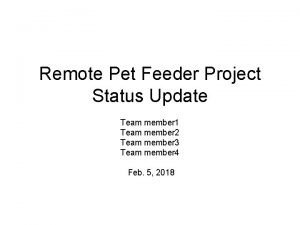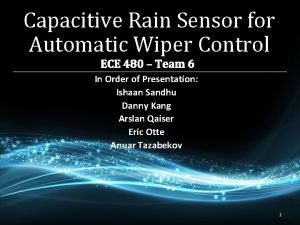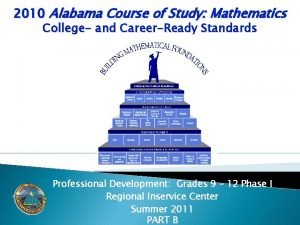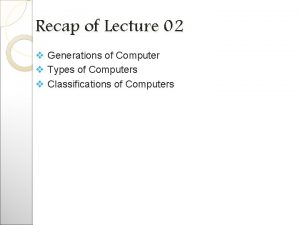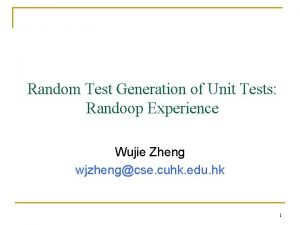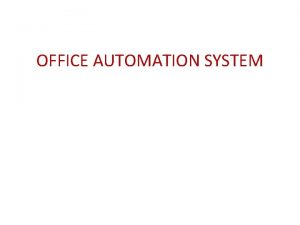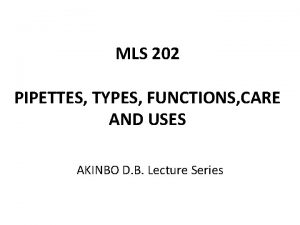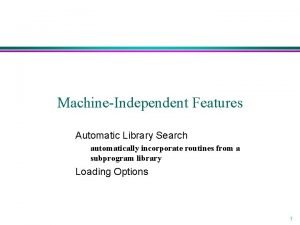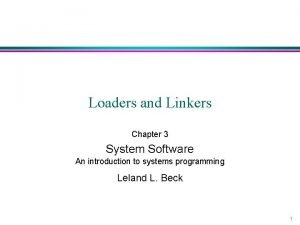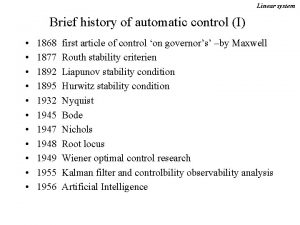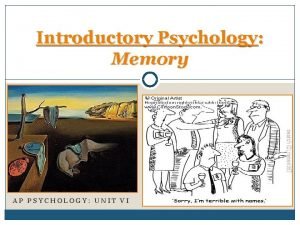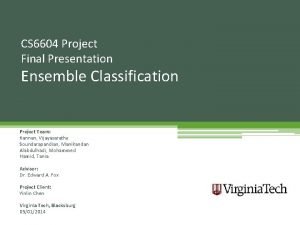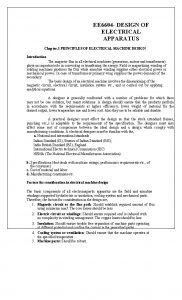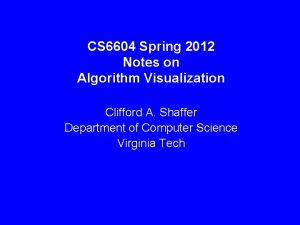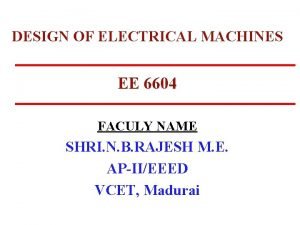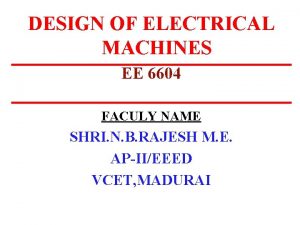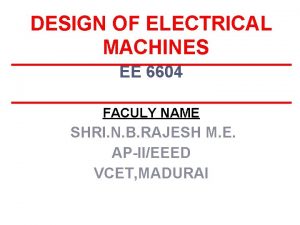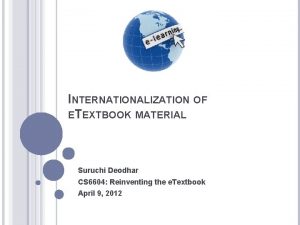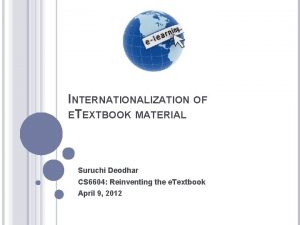CS 6604 Course Project Fall 2019 Automatic Classification


























- Slides: 26

CS 6604 Course Project Fall 2019 Automatic Classification of Arabic ETDs Eman Abdelrahman and Fatimah Alotaibi Supervised by: Dr. Edward Fox December 10 th, 2019 Virginia Tech, Blacksburg, 24061

Acknowledgements: ● We would like to deeply thank Dr. Fox for his continuous support. ● Also, our colleague Palakh Jude for the guidelines and assistance she provided us. ● We would also like to thank our colleague Bill Ingram for adding us to his ARC allocation. ● Special thanks to Saudi Digital Libraries for giving an account for Fatimah Alotaibi which made this project possible. ● Thanks to Institute of Museum and Library Services IMLS LG-37 -19 -0078 -19.

Outline: ● ● ● ● Motivation. NLP in Arabic language. Related work. Dataset. Preprocessing. Experiment and results. Insights and future work.

Motivation ● ETDs are becoming the new genre. ● They need classification for better browsing and accessibility. ● Increasing number of universities are requesting their graduate students to deposit an Arabic translated version of their ETD or at least for the title and abstract. ● No prior machine learning research has been done on Arabic ETDs due to: ○ ○ Data availability. Complexity of Arabic Language.

NLP in Arabic Language According to “Introduction to Arabic Natural Language Processing” book, Nizar Y. Habash, Morgan & Claypool Publishers, 2010: ● Vast majority of Arabic words are morphologically complex. ● Arabic is high inflectional and derivational language. ● Arabic language has rich and complex grammatical structures. Significant challenges to many Natural Language Processing (NLP) applications.

Related Work Classification models performance comparison:

Related Work Cont. Building new system, comparison with other existing systems

Related Work Cont. Classification with no preprocessing

Dataset:

Dataset: ● United Arab Emirates University “Scholarworks @ UAEU”.

Dataset: ● United Arab Emirates University “Scholarworks @ UAEU”. ● Challenge:

Dataset ● Saudi Digital Library ○ Ask. Zad Library

Dataset: ● Saudi Digital Library ○ Ask. Zad Library ● Challenge:

Dataset: ● Saudi Digital Libraries ○ Ask. Zad Library ○ 12 categories ■ ■ Total 518 documents 124, 320 words

Categories: ● Mapping to Pro. Quest categorization system

Preprocessing: 1. Stopwords removal a. NLTK 2. Lemmatization a. By Farasa API Lemmatization works better than stemming for the data mining and information retrieval, especially in Arabic as it is highly inflectional language.

Experiments and Preliminary Results ● Multiclassification performed poorly: ○ Average Accuracy ~ 24% ● Binary classification performed better: ○ Average Accuracy ~ 68% per Category

Experiments and Preliminary Results (Contd. ): ● Multi-class Classification: Classifier Accuracy SVM 0. 237 Decision Trees 0. 244 Random Forest 0. 252 Ensemble Classifier 0. 259

Experiments and Preliminary Results (Contd. ): ● Binary Classification: ○ Random Forest

Experiments and Preliminary Results (Contd. ): ● Binary Classification: ○ Random Forest

Experiments and Preliminary Results (Contd. ): ● Binary Classification: ○ Random Forest

Insights and Future work ● Investigate why there exists a big difference between accuracies for different categories in the Binary Classification.

Insights and Future work ● Investigate why there exists a big difference between accuracies for different categories in the Binary Classification. ● Investigate the low performance of the Multi-class Classification: ○ Parameters tuning

Insights and Future work ● Investigate why there exists a big difference between accuracies for different categories in the Binary Classification. ● Investigate the low performance of the Multi-class Classification: ○ Parameters tuning ● Increase the size of the corpus: ○ Sketch Engine

Insights and Future work ● Investigate why there exists a big difference between accuracies for different categories in the Binary Classification. ● Investigate the low performance of the Multi-class Classification: ○ Parameters tuning ● Increase the size of the corpus. ○ Sketch Engine ● Run each classifier against both Arabic and English abstracts separately. ● Use word embeddings.

Questions
 Automatic pet feeder project report
Automatic pet feeder project report Automatic rain sensing wiper using arduino
Automatic rain sensing wiper using arduino 2019 alabama course of study mathematics
2019 alabama course of study mathematics Sailor course brick
Sailor course brick Course title and course number
Course title and course number Course interne course externe
Course interne course externe Straw egg drop project
Straw egg drop project Ppm university of pretoria
Ppm university of pretoria Project management crash course
Project management crash course Bsb51407
Bsb51407 Software project management course
Software project management course Parts of automatic pipette
Parts of automatic pipette Vsts octopus deploy
Vsts octopus deploy Automatic bladder vs autonomic bladder
Automatic bladder vs autonomic bladder Automatic input device
Automatic input device Randoop automatic test
Randoop automatic test Verbal analog conditioning examples
Verbal analog conditioning examples Switchboard
Switchboard Components of office automation system
Components of office automation system Automatic transmission troubleshooting chart
Automatic transmission troubleshooting chart Automatic pipette function
Automatic pipette function Explain machine independent loader features in detail.
Explain machine independent loader features in detail. What is automatic library search
What is automatic library search Loaders in system software
Loaders in system software History of automatic control
History of automatic control Explicit memory psychology example
Explicit memory psychology example Advantages of manual input devices
Advantages of manual input devices
